While a lack of new opal finds, higher fuel prices and more regulation makes life harder for our Aussie opal miners, developments in opal mining technology ease the burden, and demand remains strong, in part due to the successful TV series Outback Opal Hunters. Speaking to 10 big names in the Australian opal industry, we find out what’s the state of our opal industry.
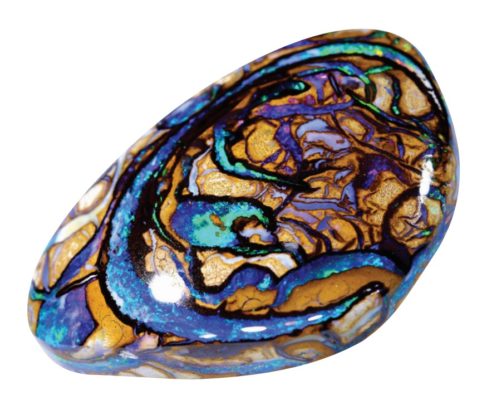
Soft Supply, Hard Demand
Most of our contributors agreed that supply of opals has struggled to keep up with surging demand, both domestically and internationally.
Opals by Steed is a Coober Pedy-based opal cutter and wholesaler which sources opal directly from the fields. Business owner and opal cutter Steed Sutherland said that opal supply is certainly lower than the demand for gem-quality opal and continues to drop nation-wide.
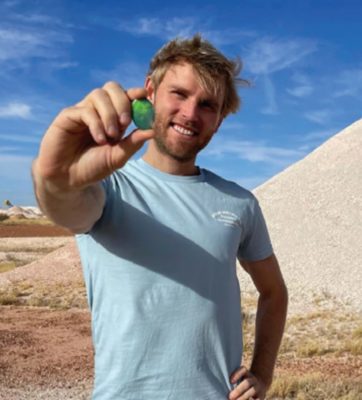
“With the minimal material coming out of the ground, this is also driving the prices up for rough opal along with the substantially higher costs involved for the mining process.
“With rough opal production declining, prices are increasing for the buyer such as myself to buy rough material and the wholesale price per carat for the jewellery manufacturers/ designers and opal dealers buying polished stones.”
Ross Sedawie is Head of Business Management at Opal Auctions which houses the largest collection of opals on the internet. For Ross, the supply for opals has softened slightly compared to 2021, but continues to trend upwards if 2021 is excluded from the equation.
“2021 was exceptionally good because of the COVID lockdowns and people purchasing more online.”
Opaline Pty Ltd is a Noosa, Queensland based gem atelier which mines, processes and wholesales opals and coloured gemstones to manufacturers. Its director Peter Christianos said the Australian opal supply has been diminishing for at least the past decade. As for demand, he said a search for opals on Instagram would reveal that the stone has real street cred and holds currency with the world’s fashionable and emerging jewellery designers.
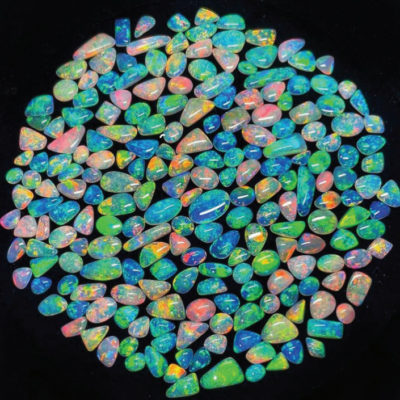
“In short, the demand for opal remains robust. Prices have been steadily increasing, providing a decent hedge against inflation.”
Sherman Opals is a 126-year-old opal wholesale and export family business headed by managing director Peter Sherman, who said the current opal supply is low, but demand has been very high.
“Mostly due to the pandemic and also due to the Outback Opal Hunters TV show, both domestic and overseas viewers have all been switched on to the delights of the Australian opal.”
Natassa Patel is Director of Gold Coast-based opal wholesalers True Blue Opals Pty Ltd, who said both the opal supply and demand appear positive from her point of view.
“Supply has been steady though the prices have somewhat increased.” She said both domestic and international demand has increased greatly, and both national and global uncertainty has encouraged many to look into and invest in the lapidary arts.
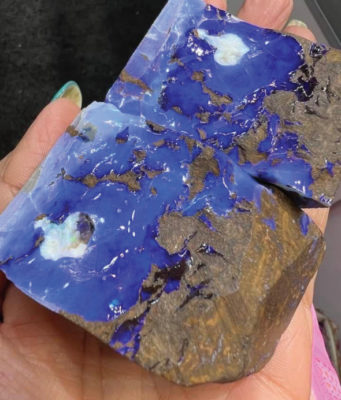
Clayton Peer is managing director of Australia’s largest commercial supplier of opal jewellery and loose Australian opals: Opals Australia. Clayton said demand has been good thanks to Australians travelling more in their own backyard.
“Lighting Ridge, White Cliffs, Coober Pedy, Winton for example have an increase in visitor numbers, (so) Aussies are still tending to travel at home.”
Another opal expert who lauded both the pandemic and Outback Opal Hunters as driving interest and demand in opals is Rhys Fox, assistant manager of Sunshine Coast opal cutter, supplier, and valuer Opals Down Under.
Rhys said that those two factors had contributed towards a dramatic increase in the popularity and demand for opal, both domestically and internationally, particularly in the US. “America has always held a steady interest in Australian Opal, but it definitely has been back on the rise.”
Lightning Ridge Opal Mines is a family owned and operated opal business in Melbourne, and director Atheka Le Seouf said the domestic market remains steady, and once international travel and tourism returns to pre-pandemic levels, she expects to see an increase.

Opal mining remains a costly, over-regulated, tough gig
Many of our respondents said that conditions on the mining fields are tough due to the weather, regulation and costs.
Peter Christianos didn’t mince words when he said that opal mining has become prohibitively expensive.
“Small scale artisanal miners are burdened with the same regulatory costs and compliance requirements that large corporations deal with.
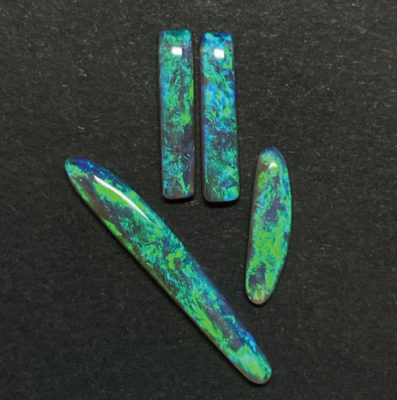
“Opal mining representatives are proactively collaborating with the authorities to affect policy-making outcomes that prioritise and facilitate expenditure on production at the opal fields.”
Echoing similar views, Ross said conditions are becoming harder for miners who want to obtain and run an opal mine, with everything from disputes with farmers to government regulation holding up operation.
“The Queensland state government imposed a moratorium on new small mining claims on November 25, as part of a review in its draft Queensland resources industry development plan.” Conversely, Peter Sherman said that despite a lack of productive mining, conditions on the mining fields remained buoyant.
“With the large volume of ‘domestic tourists’ travelling around Australia, places like Lightning Ridge, Coober Pedy, Andamooka and many of the Queensland Boulder Opal fields received a good amount of visitors, hence energy and dollars into the industry.”
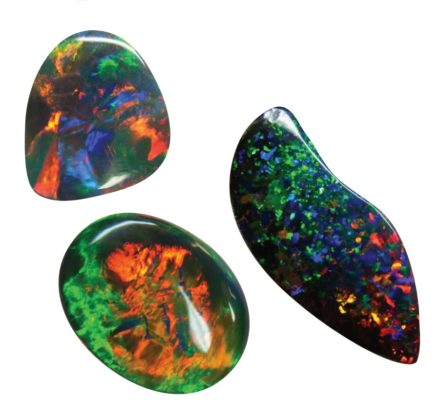
Whilst Opals by Steed is not a mining company, Steed acknowledged that costs of everyday items can be substantially higher for his local Coober Pedy mining community, including the all-important miner’s tool: diesel.
“These prices along with minimal help/incentives from government departments towards opal mining make the option of exploration to find new opal bearing ground and fields near impossible which is yet another reason opal production is declining rapidly.”
Specifically addressing the mining fiscal situation, Natassa said that increased demand meant miners have found it easier to finance their operations.
“They also have become direct sellers with the increase exposure and opportunities of the internet.”
Though she acknowledged that taking on online selling in addition to mining would be difficult to maintain effectively.
Winton-based opal mining, cutting, wholesaling and jewellery designing company Boulder Opal Mines Australia is managed by co-founders John Doyle and his partner Leanne Smedley. John said there is more red tape and paperwork involved in operating an opal mining company than there was 20 years ago. However,he maintained a sunny attitude regarding conditions on the field.
“Remote, hot in the summer, dusty… In saying that: we love it.”
Top Technology and Techniques
Peter Christianos believed the adoption of new technology and techniques is paramount to the industry’s success going forward.
“The use of drones for aerial interpretation and prospecting is becoming widespread… such affordable and accessible technologies give the modern miner an edge.”
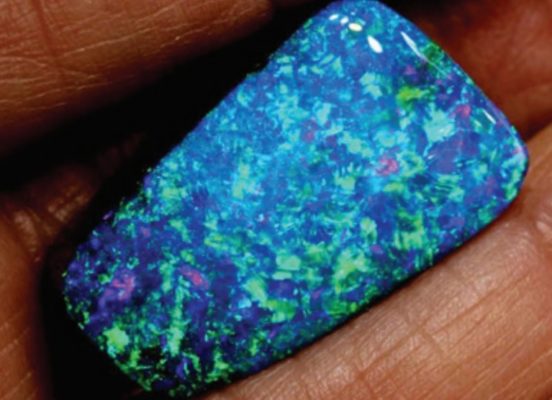
He also said that ground-penetrating radar systems which were once confined to universities and academia are fast becoming realistic tools that miners are actively trialling to conduct underground mapping. Madsen Opals Pty Ltd is a Sydney based opal miner, wholesaler and exporter operating since 1982.
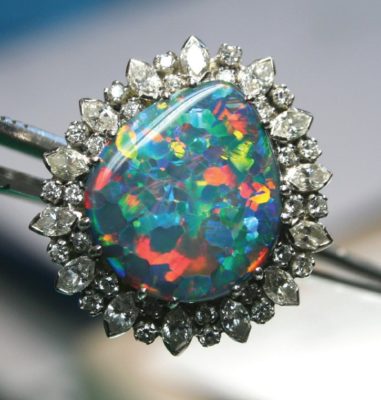
Its director Erik Madsen said that unfortunately very little had changed in mining techniques over the past few years. From his perspective, he and his mining partner at Lightning Ridge are the only ones trying anything new: Black Opal mining in a similar manner as large-scale coal or gold mining.
“We have constructed an incline from the surface down to the opal-bearing levels and then we are tunnelling using an excavator and a large front-end loader.
“We are holding the roof up with roof bolts and steel mesh.” He said that by using this equipment, they can extract a large amount of opal dirt in short time, and are also able to wash the opal dirt constantly in the wash plant.
“We believe it is a matter of being able to wash large amounts of potential opal dirt to be a successful producer while still keeping the cost as low as possible.”
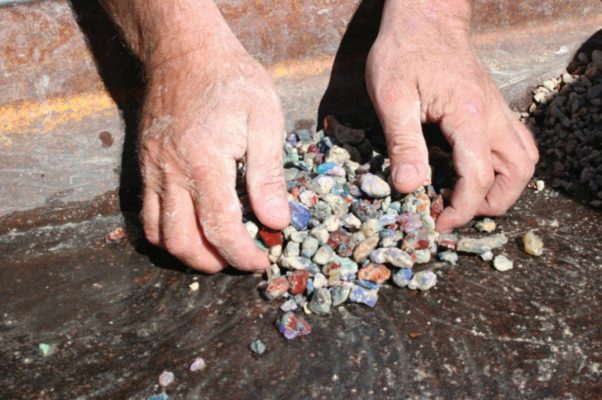
Peter Sherman said there is a constant need for upgrades to opal mining equipment and scientific research into deep earth opal exploration. To that end, John said satellite imaging has become used to spot fault lines.
As for everyday mining tools, Ross said that electric lights and jack hammers have helped reduce the reliance on generators.
“While they are still needed, having the ability to charge up strong LED lights overnight that last for nine hours underground have helped to reduce the reliance on generators.”
Where’s the next generation of opal mines?
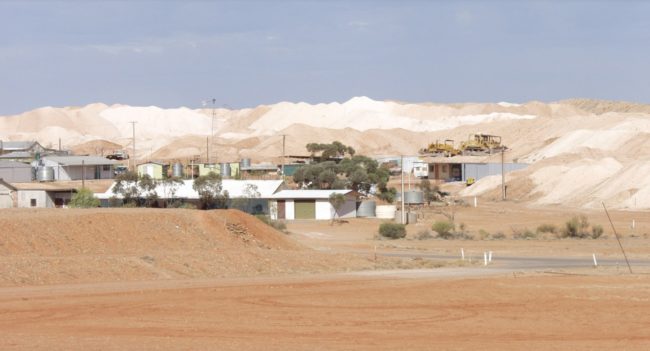
John said that he doesn’t see younger people coming into the mining side of opals, which is concerning for the industry.
“However, we’ve noticed, in recent years the younger people coming into the industry are the tech-savvy buyers and sellers with high internet marketing skills.”

From Ross’ perspective, the number of young miners entering the mining department is increasing but very slowly.
“In Coober Pedy for example, many young miners would prefer to work down the road in the copper mines and make a high wage, rather than try to find a pocket of opal.
“Having said that though, there are young miners who have started mining who are creating huge followings on social media like Tik Tok…almost glorifying being an opal miner, which is great for the industry.”
Steed regarded the dearth of new talent coming in as possibly one of the opal industry’s biggest killers.
“Whilst there are many industrious young miners working hard and making it their living, iron ore mines near Coober Pedy have taken many who may have followed in their father’s footsteps where they are guaranteed a solid pay cheque.”
He said people can’t blame miners forgoing opal mining given the tough conditions and lack of guaranteed regular pay. An opal rush is now overdue across all our nation’s opal fields according to Peter Christianos.
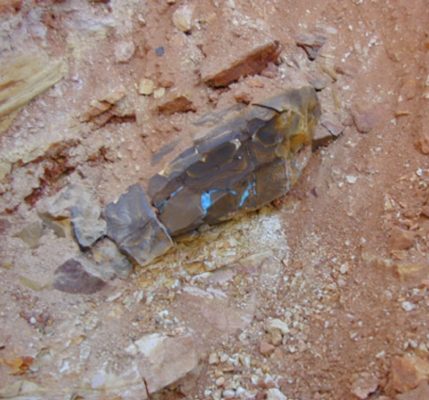
“Nonetheless there is a steady trickle of new entrants across all of the opal fields: both younger miners and older retirees who are keen for the lifestyle and to ‘have a go’. “Many talented crews whose members have other professions are mining on a part-time basis alternating shifts with their partners.”
For Erik, the costs and risks are what’s making it difficult to attract new young people into the industry.
“There are some younger miners from family to form the next generation of miners but not a very large number.
“Another reason is that in general there are less and less miners… older miners are dying and then there are very few new young people starting to mine.”
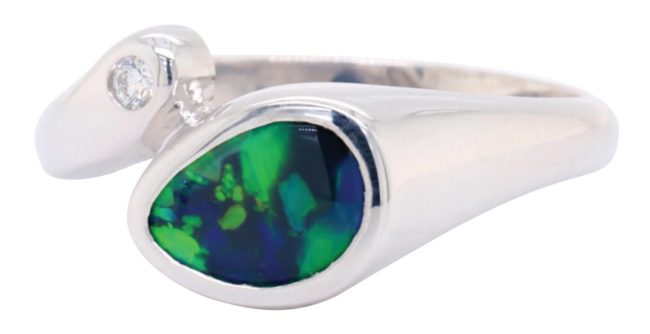
Peter Sherman said there are some young miners entering the system, but too few for long-term supply and production. However, many exiting the cities for a lifestyle change in the country over the past few years, which may bode well for mining’s future labour force.
“For this reason I can see the opal mining sector appealing to these people and believe that there will be a small procession of ‘new chum’ miners with dollar signs in their eyes after watching Outback Opal Hunters.”
Clayton agreed that Outback Opal Hunters has caused an increased number of people wanting to come mining for opal.
When it comes to mined opals, nothing goes to waste
When asked about what happens to the majority of the mined opals that aren’t gem quality, the overwhelming consensus is that every stone including low-quality potch will have a use, and virtually nothing gets discarded.
Peter Sherman estimated that only two or three per cent of opals mined are of the highest gem quality, but nonetheless said most opals are considered precious gems to the finder, buyer, and wearer.
“The great thing about opal is that all stones have their charm and appeal (hence in their own way they are still gems).”

He said that during lockdowns, there was huge demand from home hobby cutters, which meant large portions of what is normally ‘reject’ or low-quality opal sold extremely well.
“To these home hobbyists every stone they cut is a ‘gem’.”
Similarly, John said that approximately five per cent of mined opals are gem quality, and that while the next quality down used to be discarded opals, they have found a use and become popular. For Boulder Opals, he said the only stones discarded are the lowest-grade potch, along with crazed and cracked opal.
For Atheka, there really isn’t any such a thing as a reject opal.
“If an opal has colour in it, then it can be used in lower quality jewellery, or for triplet and doublet manufacture.”
Natassa estimates only 10 per cent of opals are gem-quality, and her team works hard to think of innovative ways to use the other 90 per cent.
“For example, we use the ironstone matrix from the Boulder Opal fields to make dye where we use other gemstones as the coloured additions of the number dots.
“We also invest heavily in making opal beads from the low-grade potch and colour of all opal, combining it with either a few gemgrade opal and or other coloured stones in bracelets, lariats and such.”
The great thing about the internet, is that for companies like Opal Auctions, it opens all types of opal to the market.
Ross said this meant that stones below gem-quality that would have been discarded in the pre-2000s are attracting interest, including cheap rough for cutting practice, and even opal chips in fish tanks.
“This means that no opal goes to waste…we have even had people who strictly wanted black opal potch for use in an art exhibit!”
Peter Christianos considers only five per cent of opals and other gem-quality coloured stones to be top quality.
“Super-gems make up less than one per cent, gems are five per cent, and commercial gems are 10 to 25 per cent.
“This top quartile is set in precious metal and constitutes fine jewellery.”
Like his counterparts, this doesn’t mean he considers the remaining 75 per cent rejects.
“There are various grades of ornamental materials which are utilised for fashion jewellery, doublets, triplets, beads, specimens, carvings, souvenirs, amulets, inlays etc.”
The Outback Opal Hunters Effect
There’s no denying Discovery Channel’s Outback Opal Hunters did wonders to thrust Australian opals and opal mining not just onto the national but world stage.
The exploits of the series’ opal miners across South Australia, Queensland, New South Wales, and Western Australia captured the imaginations of viewers worldwide, and made many hungry for opals.
Peter Christianos said the show had definitely raised awareness of the rarity of our national gemstone.
“On the one hand the contrived and shallow plots (pun intended) of the program make me cringe as reality is in every way more intriguing.
“But on the other hand, it is undeniably exciting to see my colleagues up in lights as ‘film star’ celebrities.”
He said the series had become a major talking point which brought visitors back to the opal towns while also stimulating sales locally and abroad.
Similarly, Steed regarded the show as having done huge things for the opal industry including creating desire to come to Coober Pedy, Lightning Ridge and other regions to try their hand at opal mining.
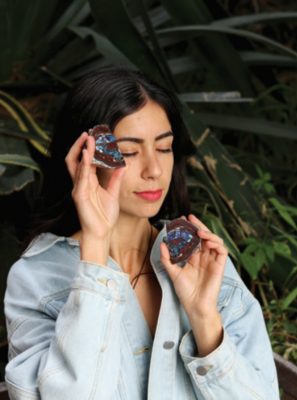
“Millions of people watch the show and have shown many the beauty of opal and what It can achieve as well as the extreme challenge this gem offers to miners and cutters.”
Outback Opal Hunters has definitely whet the appetite of amateur collectors and lapidarists, according to Rhys, having seen more clients contact them or come into Opals Down Under, either to learn more about our national gem or start their own opal journey.
“It’s great for the industry to see this level of interest.” Conversely, Ross said that feedback from Opal Auctions’ buyers indicates that the show represents too much hardship and fabricated stories, without focusing on the opals.
“The feedback we get is that show does not educate people at all about opal (since they almost never find any!)” Peter Sherman said Outback Opal Hunters definitely opened the eyes of Australians and indeed the world to this amazing and fascinating gem.
Read below for related stories: